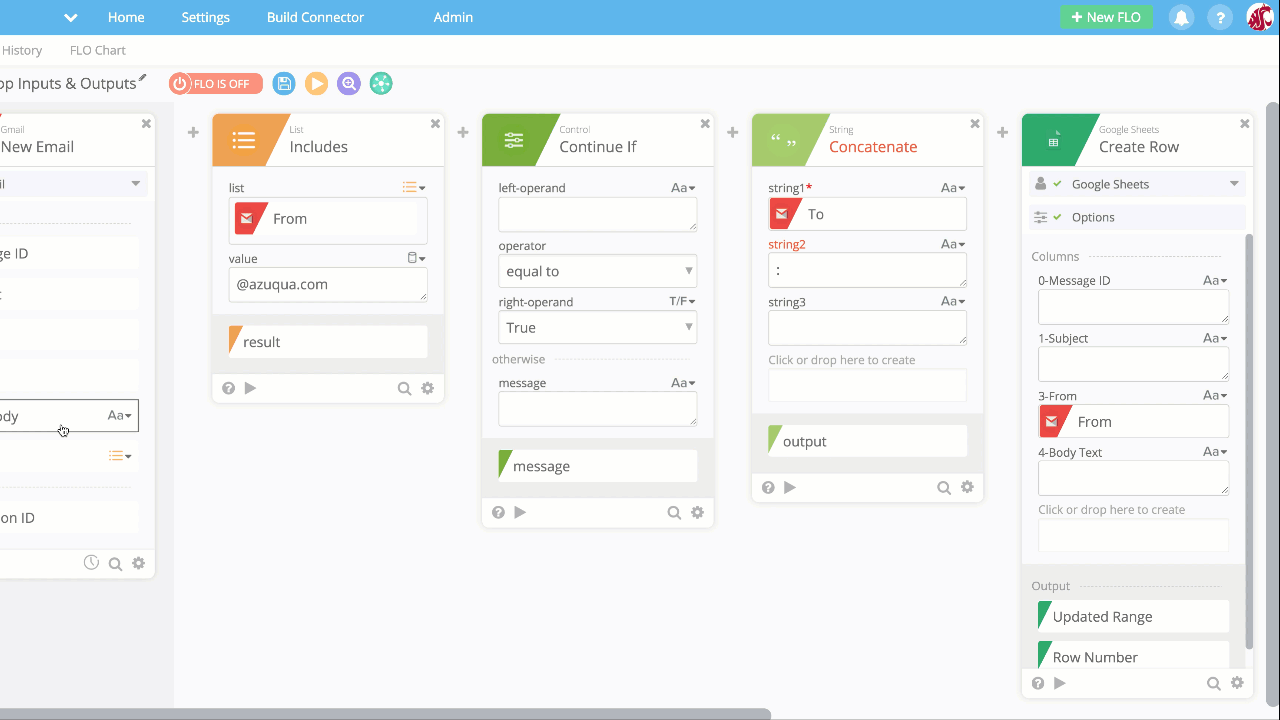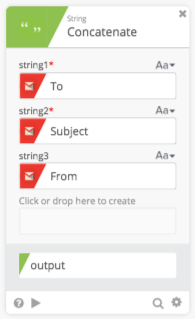A very important concept to understand is the role of inputs and outputs and how they are mapped between different steps in your Flow. This module will discuss the drag and Drop functionality that makes working with Flows a dream!
Course Material
A very important concept to understand is the role of inputs and outputs and how they are mapped between different steps in your Flow. This module will discuss the drag and Drop functionality that makes working with Flows a dream!
Overview
A very important concept to understand is the role of inputs and outputs and how they are mapped between different steps in your Flows.
Inputs and Outputs
“Inputs” are the empty spaces you see in connectors and functions.
“Outputs” are the draggable tiles you see on trigger events, actions, & functions.
This is how you define data mappings and share data between application. Click and Drag an output to the appropriate input. You can use mapped outputs to map to new inputs on different actions or functions.
Drag and Drop Functionality
Designer features an easy way to drag and drop data values from step to step.
You drag outputs & drop them on inputs.

Additional Notes
- Every connector or function you interact with inside of Designer has inputs and/or outputs.
- Trigger Events only have outputs while actions and functions typically surface both.
X-Ray Mode
X-ray mode helps you see where outputs have been mapped in your Flow.
An output can be mapped to many inputs but an input will only accept a single output.
Combining Outputs
There are functions available to combine many outputs into a single output.
Concatenate and Compose are great for this.

If you drop an output on an input that already has a value mapped, it will replace it.
If you want to remove a data value - an output, you can simply hover over it and click the “X”

Often times, most of the data you will need to map comes from the first step in your Flow. You can always click the lock icon and it will stay in place as you scroll across your Flow.
Types
All inputs and outputs have a “type”.
To see the type, just hover over the input/output.

Some of them are editable manually and automatically by dropping a field on the input.
Types include:
- Files
- True/False
- String
- Objects
- Numbers
Types are very important. Some key tips:
- The type of input/output dictates what type of output/input it can be associated with.
- There built in rules that will let you know if your types don’t match up if you.
- Make sure all of the types match up and then you can save your Flow.
